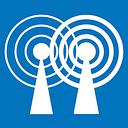A Better Election Map
An alternative to the typical red/blue election map, this 3D version shows which candidate won each county as well as each county’s relative importance (total vote count).
County-level results from the 2016 U.S. presidential election
Election maps are telling you big lies about small things
The typical red/blue election map is in some ways misleading. The one below shows the county-level results for the 2016 election. To look at all the red it would appear Republicans dominated the race. In reality, Democrats received a larger share of the popular vote.
As with most maps that rely on color alone, election maps like this are great for communicating binary information (which candidate won county X?). But they don’t do a very good job conveying magnitude (how important is county X compared to other counties?).
As an example, L.A. County alone has a population of over 10 million. That’s more than the combined population of 10 entire states. Maine, New Hampshire, Rhode Island, Montana, Delaware, South Dakota, Alaska, North Dakota, Vermont, and Wyoming together have a total population of just over 9 million.
Election cartograms
One alternative that has become popular this year is to map the election results using a cartogram, something Professor Mark Newman at the University of Michigan has been advocating for a long time. His maps deform the shape of each state/county so that each area is sized proportional to its population. The one below also uses a spectrum of colors, rather than just red and blue, to show how close the vote was in each county.
I like cartograms and use them often myself, but they do have shortcomings. Namely, the deformed shapes can become unfamiliar, making it difficult to recognize what the different areas are. Some people also find cartograms weird and even gross to look at.
Another possibility is to use a tiled cartogram, like this one by FiveThirtyEight. It’s less weird-looking than a continuous-area cartogram (whether that is a good or bad thing) and it makes it easier to recognize what areas you’re looking at. It’s a perfect choice for showing a quick summary of state-level results, the way it’s used on FiveThirtyEight.
However, it gets increasingly difficult to build maps like this as you move to finer levels of granularity. At the county level, the hexagons would have to be extremely small to get the sizes and shapes right. For all intents and purposes, it would become a continuous-area cartogram like the map above it.
The election prism map
A 3D map like the one at the top, sometimes called a prism map is another possibility. By extending each region into the 3rd dimension, it’s possible to show the relative importance of each region while retaining the map’s same basic shape, keeping the areas recognizable. In this case, the height of each county corresponds to its total number of votes, though it could just as easily show population or share of the electoral vote.
For a closer look, see the full screen interactive version.
Credit:
- Credit to Mark Kearney for the county-level election data, results as of 11/13/2016.
- The 3D map was built with Blueshift, the map-making tool I’ve been working on, which I hope to release very soon. If you’d like to give it a try you can find more information here.
Originally published at Metrocosm on November 17, 2016.

